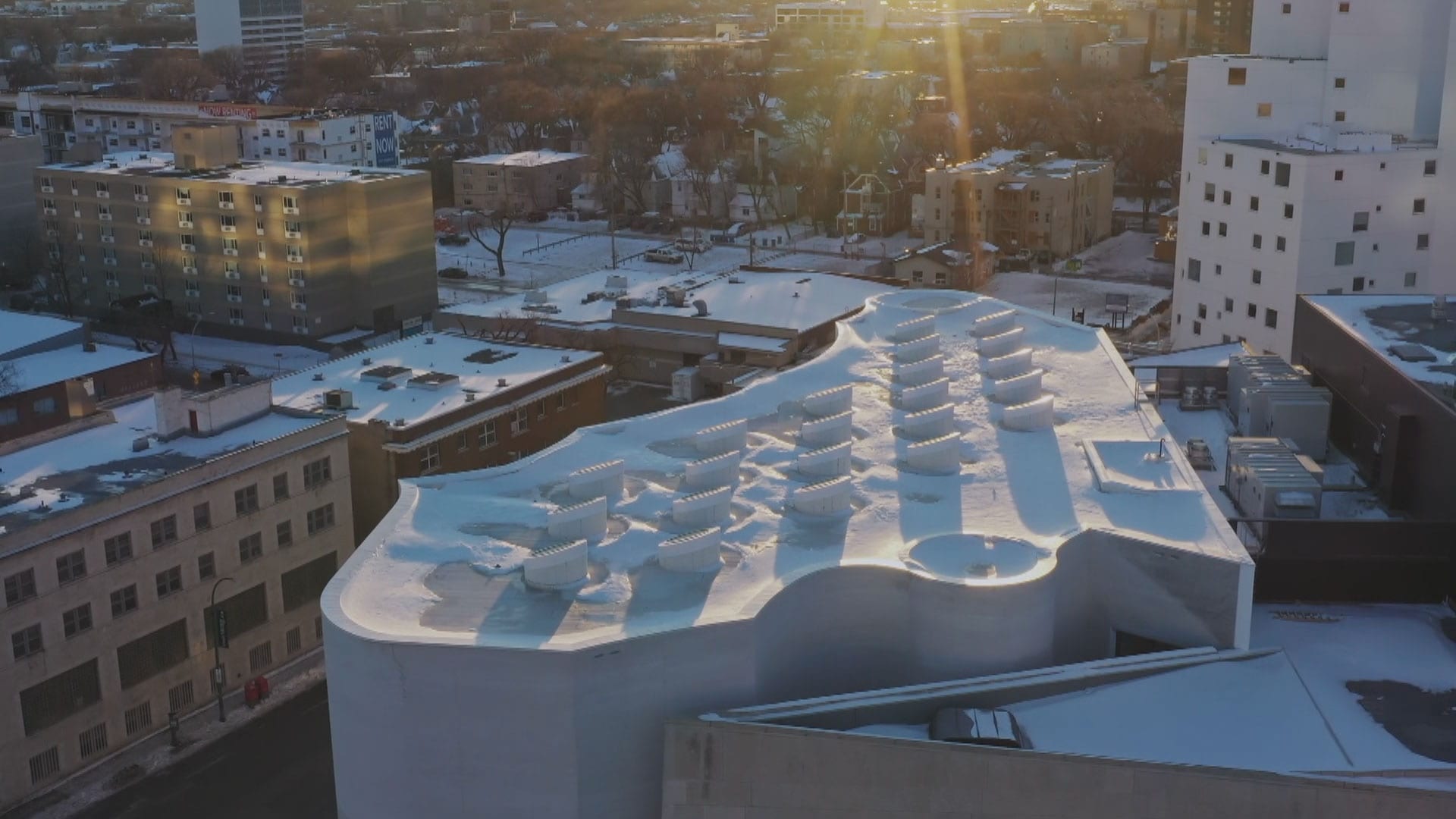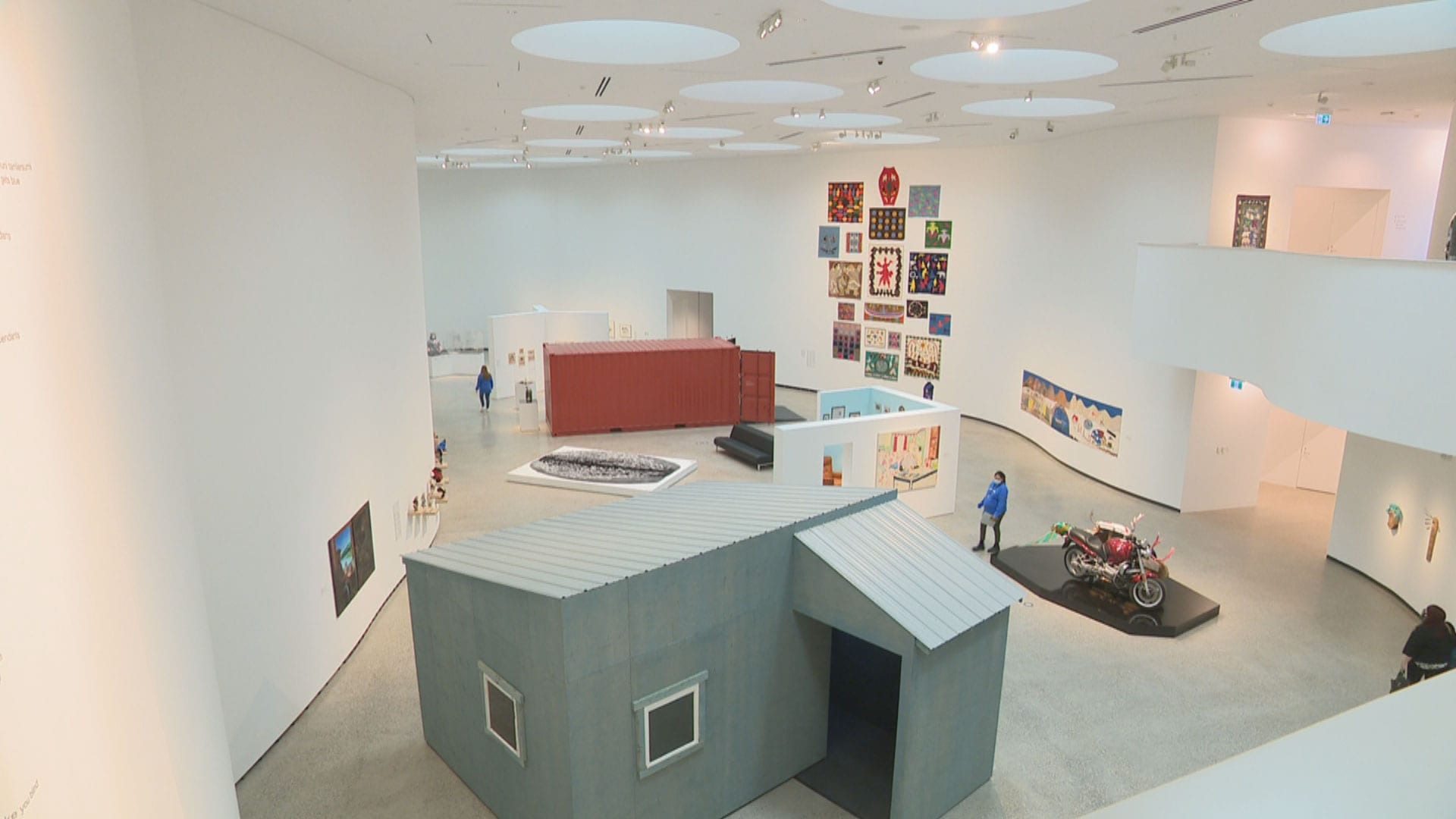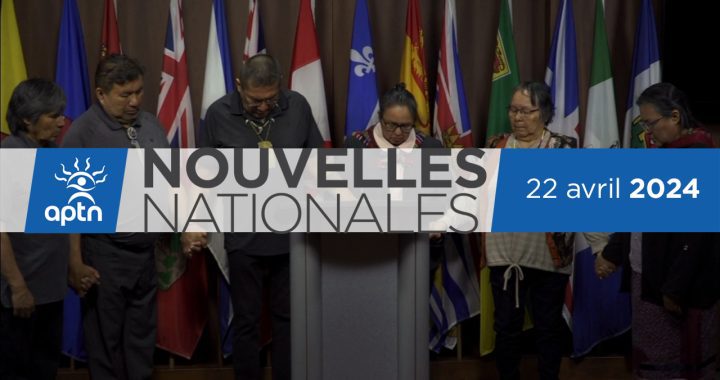Sounds and visions of the north fill the Winnipeg Art Gallery’s newest space called Qaumajuq or the Inuit Art Centre.
Nearly two years after shovels first hit the ground the centre is ready to open its doors and its extensive collection of Inuit art to the world.
The Winnipeg Art Gallery (WAG) is hosting a virtually celebration Thursday and Friday before Qaumajuq officially opens to the public on Mar. 27. It hosted a small private opening for First Nations, Inuit and Métis people on March. 22.
“I think this is a huge turning point for Inuit and non-Indigenous people,” said Maxine Angoo, the former manager of the WAG’s visible vault digital platform.
“[Guests] are going to learn a lot of things about Inuit that not a lot of people have had the opportunity to.”
The large open space, 3,761 square-metre to be exact, was designed by Michael Maltzan, an Los Angeles based architect, and represents the vast lands in the north.
Maltzan and his team visited Inuit communities at the beginning of the design process to get a feel for the environment.
It’s a goal some Inuit say Maltzan and the team achieved.
On the outside white, stone façade mimics icebergs while on the inside large, circular cut outs in the ceiling fill the gallery level with natural light.
For Angoo, who lives in Winnipeg, it takes her back to home community of Whale Cove, NU.
“[The circles] remind me of seal holes when you’re out on the land hunting. When I first walked into the space I looked up like wow this is amazing,” she said.
“I was also in here with another Inuit elder and she said it reminded her of the top of the igloo. That was beautiful.”
Light is important to Inuit.
Some communities experience seasonal 24-hour darkness. So, when daylight returns it is celebrated.
Light is also found with the qulliq, a traditional Inuit lamp, that can be described as a way to provide light and warmth to the Earth.
This is where the name Qaumajuq comes from. It translates to “it is bright; it is lit.”
This theme is felt throughout the centre.
But, not just in the literal sense, according to Stephen Borys, the WAG’s director and CEO.
“I think about the light that focuses on what we’re doing. Exposes the rights and the wrongs. Maybe even helps us take greater responsibility because now what we’re doing is for everyone to see, and I believe that will help us even in the exercise of reconciliation,” said Borys.
When it came time to develop the centre the WAG wanted to do it right.
For so long Indigenous voices have been left out of spaces like museums and art galleries despite the countless exhibits around the world showcasing First Nations, Inuit and Métis cultures.
The WAG developed an Indigenous advisory circle to help ensure the new centre along with initiatives at the original gallery would be Indigenous-led. The circle gathered virtually last year to create traditional names for the spaces at the WAG and the Inuit Art Centre. They also helped develop Qaumajuq’s mandate.
“The WAG is over 100 years old but it is largely still a white institution and its whole organization is based on a colonial framework,” said Borys.
“What the Indigenous circle has helped us do, and before that the Inuit art task force, is rethink what is our role, who is leading, who has the authority and whose voice is out there. All of those things have pushed us to rethink how we work as an organization.”
The WAG acquired its first piece of Inuit art in the 1950s.
Since then they have amassed a collection of around 14,000 pieces – the largest public collection in the world.
Borys believes getting that first piece set in motion the events that result in this week’s opening.
“There’s no question some of the conversations, acquisitions and developments in the 1950s have impacted what we’re doing today. And, at every stage since then staff, board and volunteers have actually supported this idea,” he said.
The first idea for the centre came in the form of the visible vault, which is front and centre when guests walk through the front doors and can be seen from the outside through the main floor glass windows.
The three-story vault displays about 5,000 of the 8,000 sculptures and carvings the centre houses.
A 90-seat theatre will be used for performances as well as connecting classrooms in the north to the south.
There are also three new gallery spaces.
INUA is the centre’s inaugural exhibit. The word means “spirit” or “life force” in many dialects across the Arctic but also acts as an acronym for Inuit Nunangat Ungammuaktut Atautikkut or “Inuit Moving Forward Together.”
The exhibit showcases work from close to 90 artists.
“I think this will be a very refreshing look at what Inuit art is and what Inuit art can be,” said Jocelyn Piirainen, assistant curator of Inuit art for the WAG.
The exhibit includes more well-known styles of Inuit art such as drawings and carvings but also more contemporary pieces such as a sealskin spacesuit and a sea can installation featuring mural work with sound and video projections inside.
“What we were trying to show is that Inuit art is anything made by an Inuit artist,” said Heather Igloliorte, one of the four co-curators of INUA.
The all-Inuit team represents the four regions of Inuit Nunangat: Inuvialuit, Nunavut, Nunavik and Nunatsiavut.
Included in the exhibit are four pieces from each of the curators’ families.
“From the very beginning we wanted to honour and understand our place among our ancestors,” said Igloliorte.
“We did that installation because we wanted to situate ourselves within our own histories as family members but also broader kinship relationships we have with Inuit not just from Canada but from Greenland straight through to Alaska.”
As the WAG prepares for the centre’s opening there are still many left wondering why have an Inuit art centre in the south?
But for many involved they say Qaumajuq isn’t the end.
The future is bright for spaces like this.











